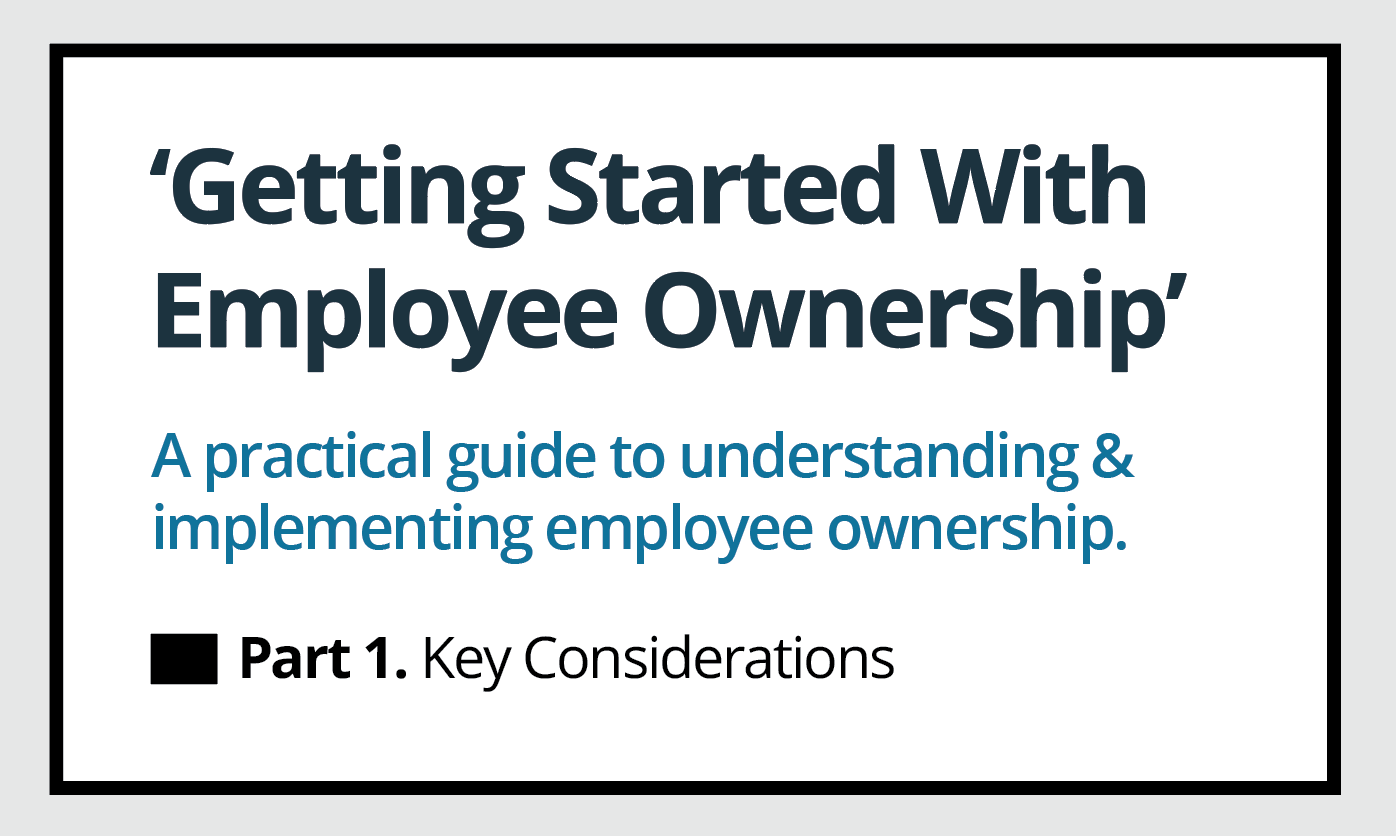Part 1. Key Considerations
Not too familiar with the fundamentals of employee ownership? Visit our page “What is employee ownership” and “Key terms” to get up to speed!
It’s vital to keep the perspective of your employees in mind at every step of your EO journey. See our guide for employees on why they should participate in an ESS for a refresh on the employee perspective.
1.1 What are you trying to achieve with employee ownership?
This is undoubtedly the first and most important question that needs to be considered when starting out on your employee ownership journey. Why? Because your answer will guide the rest of your decisions along the way to implementing an employee share scheme (ESS).
Some of the more common reasons why employee ownership might be considered include:
> Long Term Employment & Retention: I want to provide effective incentives for my employees to stay with my organisation for longer.
> Succession Planning: I’m a business owner and operator and want to pass ownership on to my staff after I retire.
> Employee Engagement: I want to provide a means for my employees to take more care and feel more fulfilled in their work.
> Workplace Culture: I want shift my workplace culture towards being more inclusive, team oriented and driven by employee initiative.
(Don’t worry if your reason for considering employee ownership is not one of the more common reasons – the most important thing is that you have one!)
It is also important to consider different goals for different people within your workplace. For example, it is reasonable to think that an experienced manager will not be driven by the same motivations as a graduate employee.
Key Point
The design of your ESS needs to follow from it’s purpose (the ‘why’).
Workshop Task 1.1
Click here or on the orange ‘Open Worksheet’ tab located in the navigation panel at the top right of the page to open our handy companion worksheet (and get the most out of your workshop tasks!).
1. List the top 3 reasons why you want to implement an ESS.
2. Below each reason list the employees that this applies to and why it applies to them.

